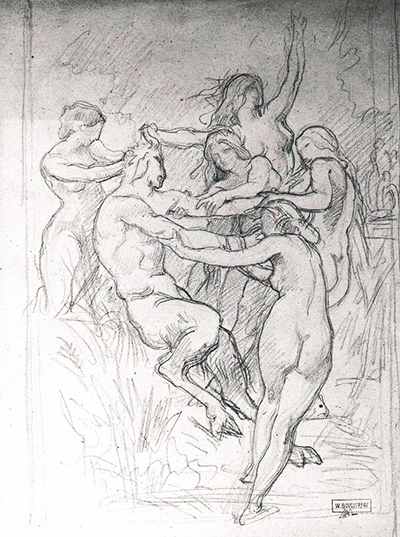William-Adolphe Bouguereau produced a huge number of study drawings for his breathtaking figurative painting, Nymphs and Satyr
One example pictured here gives an indication of how the artist would plan out his composition and experiment with different poses and angles. The majority of these drawings were graphite with perhaps some strokes of coloured pencil for additional detail.
Paintings can, in theory, be altered indefinitely directly on the canvas but someone of Bouguereau's level would always prefer to spend more time in preparation to reduce the likelihood of major changes later on. Indeed, the majority of his works were complex combinations of groups of multiple figures and the balance needed to be confirmed at the earliest stage possible.
An overview of the drawings reveals many interesting insights into Bouguereau's lines of thought. He clearly experimented with different formats for this piece, considering portrait, landscape and oval compositions before arriving upon his chosen route for the final painting. The artist would also try different positions for the key focus of the work, the satyr.
The further interesting sidepoint to this series of study drawings is that they also outline his thought process with regards the final title of his painting. One drawing, for example, is titled, once translated from French, as "Satyr dragged into the sea by nymphs".
Upon deciding on the basics of his composition he would produce another series of drawings which helped him to decide on how many nymphs to include and also how to place the balance of power between the nymphs and the satyr. The focus at this stage was still about the figures in the composition, with very little thought yet for the foliage and small stream which would adorn the final piece.
It was also during this series of drawing studies that Bouguereau came to the decision about the level of aggression to include, ultimately choosing to go for a more playful scene between the nymphs and satyr.




